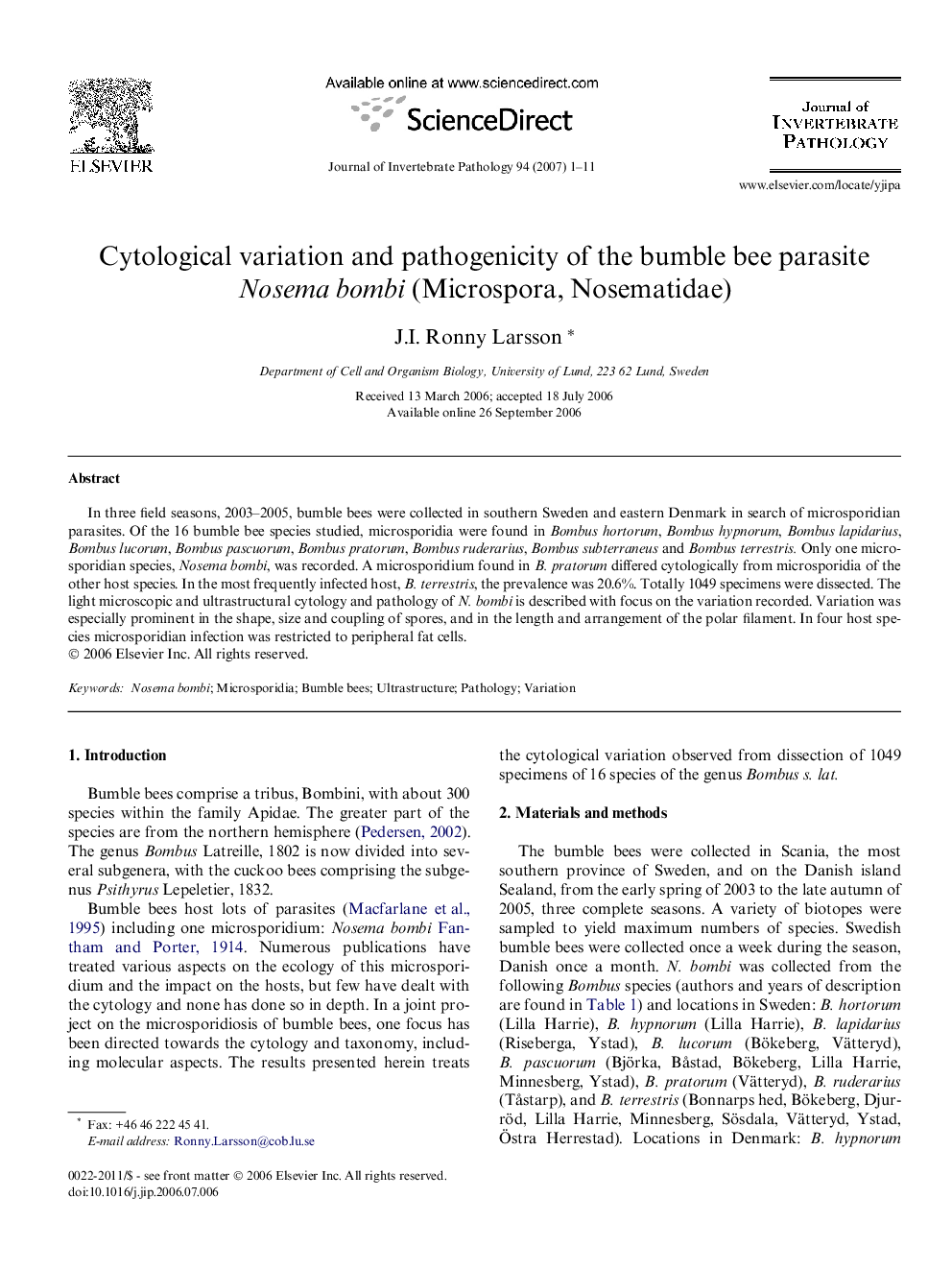| Article ID | Journal | Published Year | Pages | File Type |
|---|---|---|---|---|
| 4558728 | Journal of Invertebrate Pathology | 2007 | 11 Pages |
In three field seasons, 2003–2005, bumble bees were collected in southern Sweden and eastern Denmark in search of microsporidian parasites. Of the 16 bumble bee species studied, microsporidia were found in Bombus hortorum, Bombus hypnorum, Bombus lapidarius, Bombus lucorum, Bombus pascuorum, Bombus pratorum, Bombus ruderarius, Bombus subterraneus and Bombus terrestris. Only one microsporidian species, Nosema bombi, was recorded. A microsporidium found in B. pratorum differed cytologically from microsporidia of the other host species. In the most frequently infected host, B. terrestris, the prevalence was 20.6%. Totally 1049 specimens were dissected. The light microscopic and ultrastructural cytology and pathology of N. bombi is described with focus on the variation recorded. Variation was especially prominent in the shape, size and coupling of spores, and in the length and arrangement of the polar filament. In four host species microsporidian infection was restricted to peripheral fat cells.
